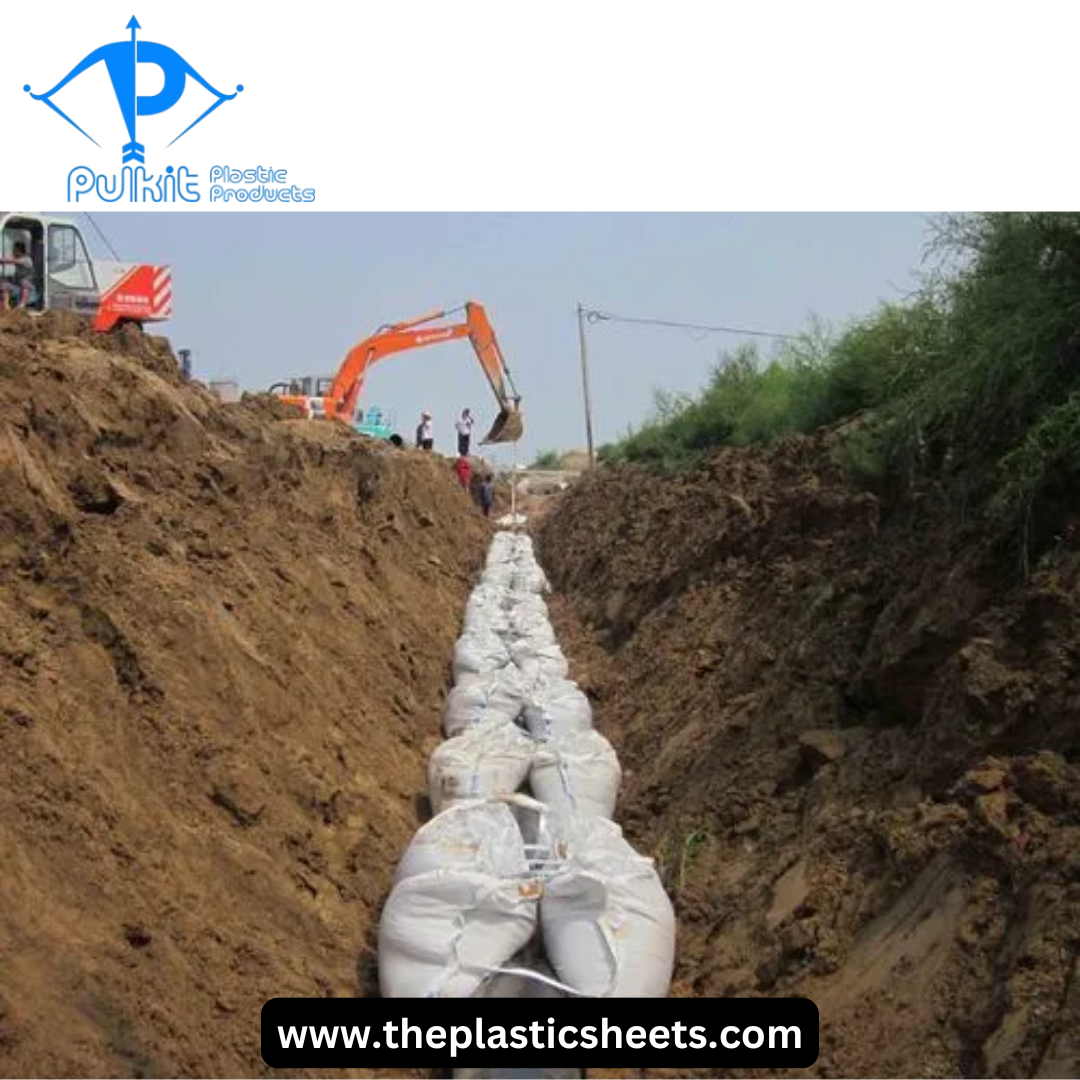In the oil and gas industry, effective pipeline management is crucial for the successful transportation of fluids. One of the essential tools that play a significant role in this process is pipeline weight bags. These specialized bags provide the necessary ballast to stabilize pipelines during installation and operation, preventing them from floating or shifting due to various environmental factors. Pulkit Plastic Products will delve into the features, applications, advantages, and frequently asked questions regarding pipeline weight bags.
What Are Pipeline Weight Bags?
Pipeline weight bags, often referred to as ballast bags, are large, flexible containers typically filled with sand, gravel, or other dense materials. They are designed to provide weight and stability to pipelines, particularly during installation in water or areas prone to shifting. By holding the pipeline in place, these bags help prevent buoyancy and movement caused by currents, tides, or soil erosion.
Key Characteristics of Pipeline Weight Bags
- Material: Heavy-Duty Pipeline Weight Bags are usually made from durable, weather-resistant materials such as woven polypropylene or high-density polyethylene (HDPE). These materials ensure that the bags can withstand harsh environmental conditions.
- Customization: These bags can be manufactured in various sizes, shapes, and weight capacities to meet specific project requirements. Customization allows for flexibility in usage across different pipeline projects.
- Reusable: Pipeline weight bags are designed for multiple uses. After a project is complete, they can be emptied, cleaned, and refilled for subsequent projects, making them an environmentally friendly option.
- Easy Handling: Most pipeline weight bags come equipped with lifting straps or handles, making them easy to transport, lift, and position as needed.
- Water-Resistant: Many pipeline weight bags are designed to resist water, which is crucial for applications in aquatic environments or areas with high moisture content.
Applications of Pipeline Weight Bags
Pipeline weight bags are utilized in a variety of applications within the oil and gas industry, as well as in construction and civil engineering. Some of the primary applications include:
1. Stabilizing Pipelines
One of the primary functions of pipeline weight bags is to provide stability to pipelines during installation. They help prevent pipes from floating or moving out of position, ensuring proper alignment and function.
2. Anchoring Subsea Pipelines
In offshore applications, pipeline weight bags are often used to anchor subsea pipelines. Their weight helps keep the pipelines submerged and secure, protecting them from currents and potential damage.
3. Erosion Control
Pipeline weight bags can be used as part of an erosion control strategy. By placing these bags along shorelines or riverbanks, they can help prevent soil erosion and maintain the integrity of the surrounding environment.
4. Temporary Support
During construction or maintenance activities, pipeline weight bags can provide temporary support to pipelines that need to be lifted or repositioned. Their flexibility allows for quick adjustments as needed.
5. Pipeline Inspection
In some cases, pipeline weight bags can be utilized during inspection processes. By stabilizing the pipeline, they allow for safer access and evaluation of the pipeline’s condition.
6. Installation in Trenching Operations
When pipelines are installed using trenching methods, weight bags can help secure the pipeline in place while the trench is backfilled. This ensures that the pipeline remains correctly aligned and protected during the backfilling process.
Advantages of Using Pipeline Weight Bags
1. Enhanced Stability
The Pipeline weight bags provide the necessary ballast to keep pipelines in place, reducing the risk of shifting or floating. This stability is essential for maintaining the integrity of the pipeline system.
2. Cost-Effective Solution
Using pipeline weight bags can be a cost-effective solution for stabilizing pipelines, as they reduce the need for extensive anchoring systems or additional support structures.
3. Environmentally Friendly
Since many pipeline weight bags are reusable, they present a more sustainable option compared to single-use alternatives. Proper maintenance and recycling can help minimize environmental impact.
4. Versatility
Pipeline weight bags can be customized to fit various project specifications, making them a versatile solution for a wide range of applications.
5. Safety
By providing stability to pipelines, weight bags contribute to safer working conditions for construction and maintenance crews. They reduce the risk of accidents caused by unstable pipelines.
6. Time-Saving
The ease of handling and installation of pipeline weight bags can save time during project execution. Their design allows for quick deployment and repositioning as needed.
Conclusion
Pipeline weight bags are an essential tool in the oil and gas industry and other sectors that rely on effective pipeline management. Their durability, versatility, and cost-effectiveness make them a preferred choice for stabilizing pipelines during installation and operation. As industries continue to evolve and prioritize efficiency and sustainability, Pipeline Weight Bags For Construction will play a vital role in ensuring the safe and reliable transportation of fluids. Understanding their features, applications, and benefits enables businesses to make informed decisions about their pipeline management strategies, ultimately contributing to safer and more efficient operations.
Frequently Asked Questions (FAQs)
1. What materials are pipeline weight bags made from?
Pipeline weight bags are typically made from durable, weather-resistant materials like woven polypropylene or high-density polyethylene (HDPE). These materials provide the necessary strength and resistance to environmental conditions.
2. How much weight can a pipeline weight bag hold?
Pipeline weight bags can be customized to hold various weights, typically ranging from 500 to 2,000 pounds or more, depending on the specific project requirements.
3. Are pipeline weight bags reusable?
Yes, pipeline weight bags are designed for multiple uses. After a project is complete, they can be emptied, cleaned, and refilled for subsequent applications, making them a sustainable choice.
4. How do I install pipeline weight bags?
To install pipeline weight bags, simply position them around the pipeline where stability is needed. Use the lifting straps or handles for easy placement. Ensure they are properly filled and secured to provide the necessary ballast.


